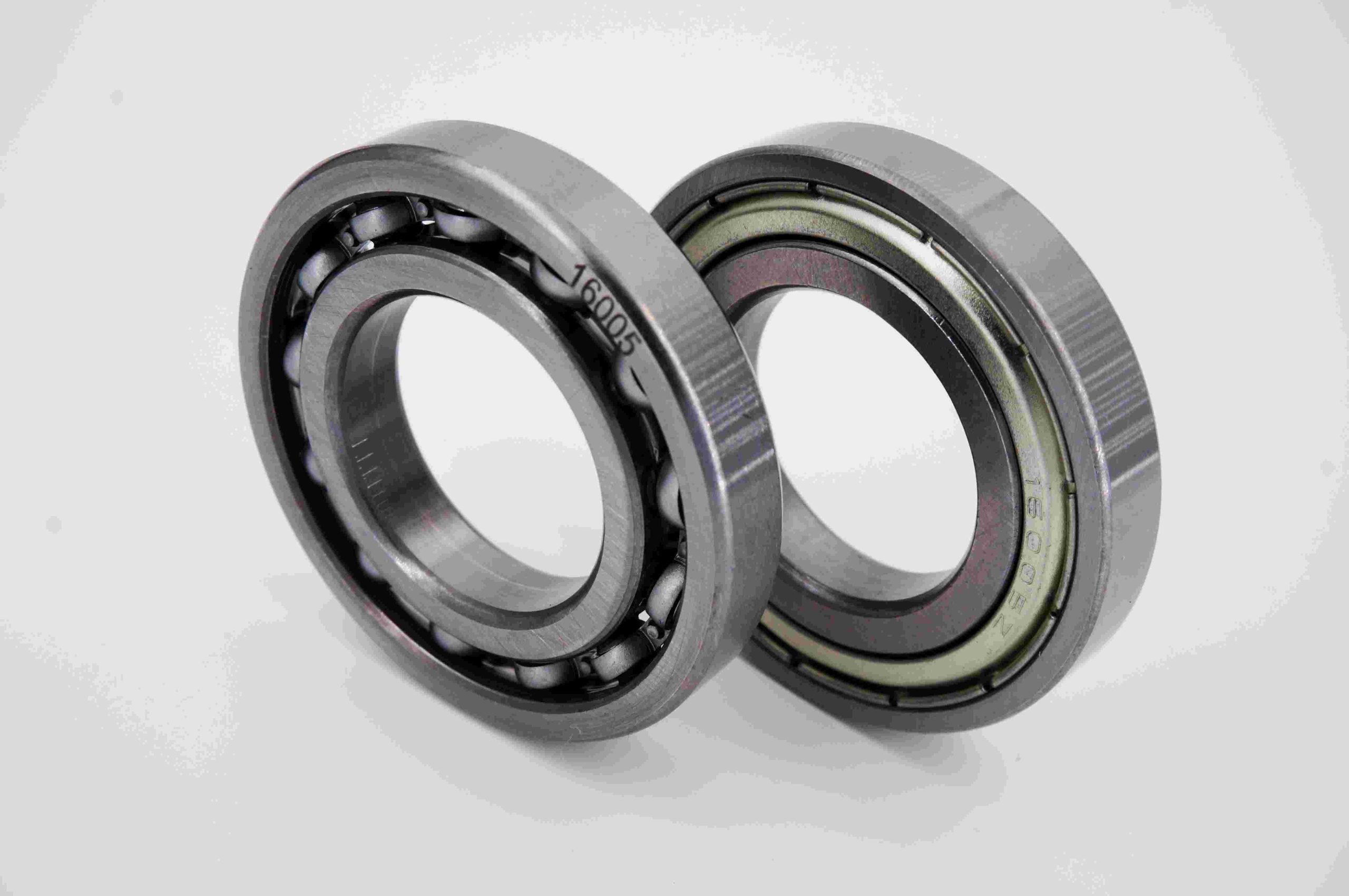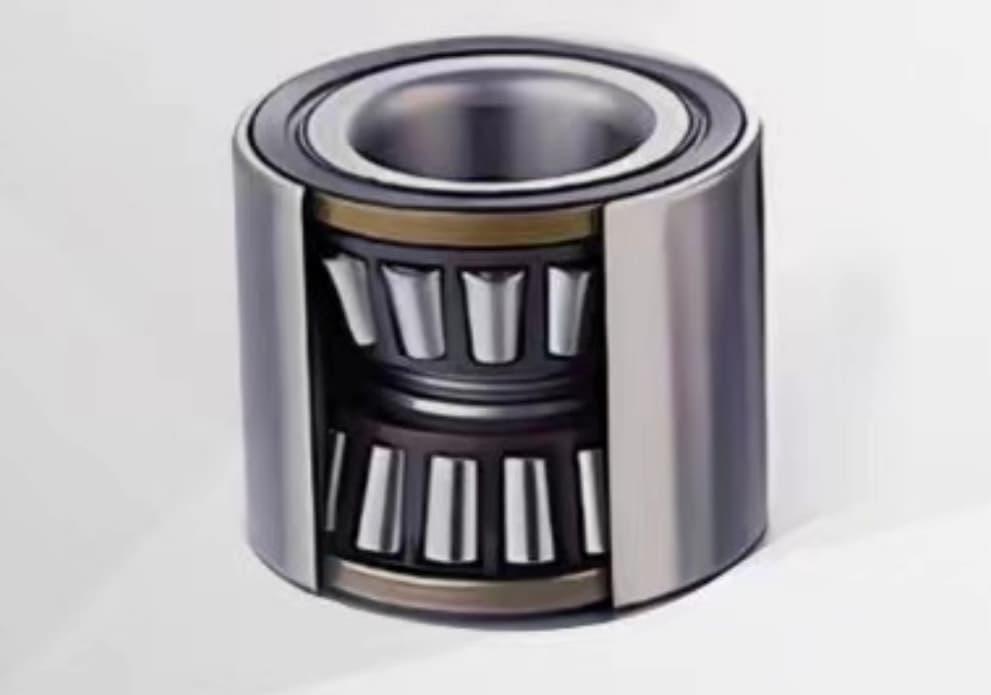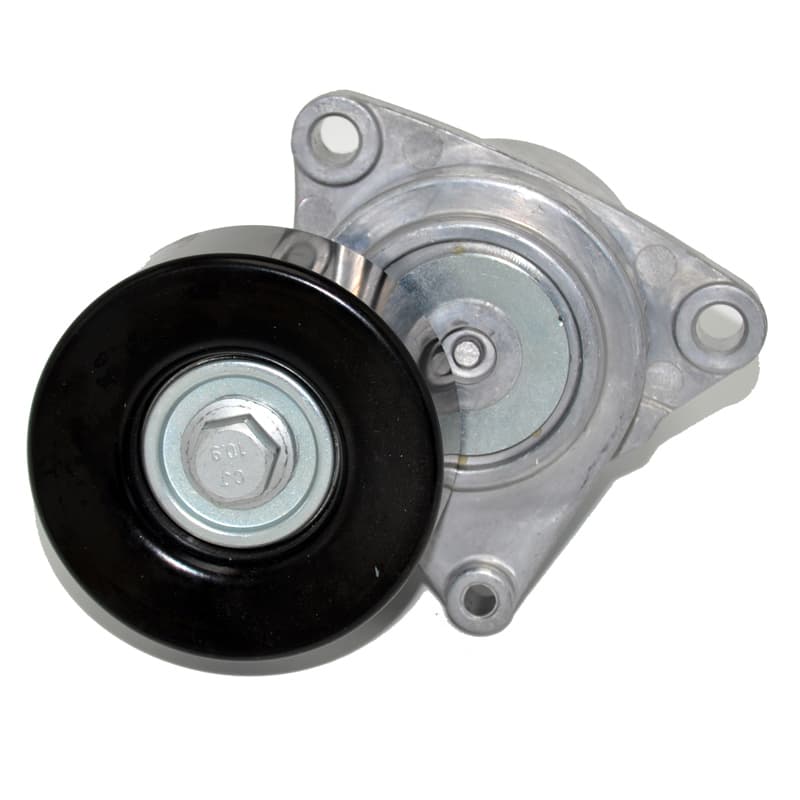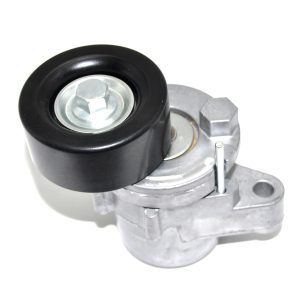Introducción
Tensor y polea tensora son parte integrante del sistema de transmisión por correa de los accesorios de cualquier motor de automóvil. Desempeñan un papel crucial en el mantenimiento de la tensión y la alineación adecuadas de las correas, garantizando el funcionamiento eficiente de varios accesorios del motor, como el alternador, la bomba de dirección asistida y el compresor del aire acondicionado. A pesar de su importancia, estas poleas a menudo se pasan por alto durante el mantenimiento rutinario, lo que provoca un desgaste prematuro, el deslizamiento de la correa e incluso un fallo catastrófico del motor.
Este artículo profundiza en la importancia del mantenimiento de las poleas tensoras y locas, ofrece una guía detallada sobre cómo inspeccionarlas, mantenerlas y sustituirlas, y destaca las posibles consecuencias de descuidar estos componentes. Al comprender la función y el mantenimiento de las poleas tensoras y locas, los profesionales y aficionados del automóvil pueden prolongar considerablemente la vida útil de sus vehículos y evitar costosas reparaciones.
Comprensión de las poleas tensoras y locas
Antes de entrar de lleno en las prácticas de mantenimiento, es esencial comprender la función de las poleas tensoras y locas dentro de un motor.
- Polea tensora: La polea tensora está diseñada para aplicar la cantidad correcta de tensión a la correa serpentina, asegurando que permanezca tensa y en contacto con todas las poleas de los accesorios del motor. Esta polea está montada en un brazo accionado por resorte que se ajusta automáticamente a medida que la correa se estira con el tiempo, manteniendo una tensión constante.
- Polea tensora: La polea tensora, por su parte, sirve de guía para la correa serpentina, ayudando a guiarla alrededor de varios componentes del motor. A diferencia de la polea tensora, la polea tensora no ajusta la tensión; su función principal es proporcionar puntos de contacto adicionales para la correa, asegurando que permanezca en su lugar y funcione sin problemas.
Ambas poleas están sometidas a un desgaste constante debido a su funcionamiento continuo bajo altas tensiones y temperaturas. Por lo tanto, la inspección y el mantenimiento periódicos son cruciales para evitar fallos que podrían provocar problemas importantes en el motor.
Signos de problemas con el tensor y la polea tensora
Reconocer los signos de un tensor o una polea tensora defectuosos es el primer paso para un mantenimiento eficaz. Los síntomas más comunes son:
- Ruido inusual: Uno de los signos más evidentes de un problema con la polea son los ruidos extraños procedentes del compartimento del motor. Un chirrido, rechinido o traqueteo suele indicar que los cojinetes de la polea están desgastados o dañados.
- Desgaste del cinturón: Un desgaste excesivo o irregular de la correa puede ser señal de que el tensor o la polea tensora no funcionan correctamente. Si la correa parece deshilachada, agrietada o acristalada, puede deberse a una tensión incorrecta o a una desalineación causada por una polea defectuosa.
- Deslizamiento del cinturón: Si la correa serpentina se sale de las poleas o no mantiene un contacto adecuado, es posible que la polea tensora no esté proporcionando la tensión adecuada. Esto puede provocar una pérdida de potencia en los accesorios del motor y un posible fallo de la correa.
- Mal funcionamiento de los accesorios del motor: Un tensor o una polea tensora defectuosos pueden hacer que la correa serpentina pierda contacto con los accesorios del motor, provocando fallos en componentes como el alternador, la bomba de la dirección asistida o el compresor del aire acondicionado.
- Desgaste visible en la polea: La inspección física de las poleas puede revelar signos visibles de desgaste, como estrías, grietas o deformaciones. Estos son indicadores claros de que la polea necesita ser reemplazada.
Prácticas de mantenimiento para poleas tensoras y poleas locas
Para garantizar la longevidad y el correcto funcionamiento de las poleas tensoras y locas, es esencial realizar un mantenimiento periódico. A continuación se indican los pasos clave para el mantenimiento de estos componentes:
1. Inspección periódica
La inspección rutinaria de las poleas tensoras y locas debe formar parte de todo programa de mantenimiento del motor. Es aconsejable inspeccionar estas poleas cada vez que se sustituya la correa serpentina o siempre que haya indicios de problemas relacionados con la correa.
- Inspección visual: Busque signos visibles de desgaste o daños en las poleas, como grietas, estrías o juego excesivo. Compruebe también el estado de la correa serpentina, ya que puede proporcionar pistas sobre el estado de las poleas.
- Comprobación del ruido: Escuche si las poleas emiten ruidos extraños durante el funcionamiento del motor. Los chirridos o rechinidos suelen indicar que los cojinetes están desgastados.
- Prueba de tensión: Para las poleas tensoras, compruebe la tensión de la correa serpentina. Una correa demasiado floja o demasiado tensa puede indicar que el tensor no funciona correctamente.
2. Lubricación
Aunque la mayoría de las poleas tensoras y locas modernas vienen con cojinetes sellados que no requieren lubricación, los modelos más antiguos pueden beneficiarse de una lubricación ocasional para reducir la fricción y evitar el desgaste prematuro. Consulte siempre las directrices del fabricante para conocer los requisitos específicos de lubricación.
3. Sustitución de la correa
La correa serpentina debe sustituirse de acuerdo con el intervalo recomendado por el fabricante, normalmente cada 60.000 a 100.000 millas. Al sustituir la correa, es una buena práctica inspeccionar y, si es necesario, sustituir también el tensor y las poleas tensoras. Una correa desgastada puede sobrecargar estas poleas y acelerar su desgaste.
4. Sustitución de poleas
Las poleas tensoras y locas deben sustituirse si muestran algún signo de desgaste, daño o mal funcionamiento. Es importante utilizar piezas de repuesto de alta calidad que cumplan o superen las especificaciones del fabricante. Las poleas de calidad inferior pueden no proporcionar la tensión o durabilidad necesarias, provocando un fallo prematuro.
- Sustitución de la polea tensora: Para sustituir la polea tensora, en primer lugar, alivie la tensión de la correa serpentina girando el brazo tensor. Retire la polea vieja e instale la nueva, asegurándose de que esté correctamente alineada. Vuelva a tensar la correa y compruebe la alineación correcta.
- Sustitución de la polea tensora: La sustitución de la polea tensora es similar a la de la polea tensora. Basta con retirar la polea vieja e instalar la nueva, asegurándose de que esté bien sujeta y correctamente alineada con la correa.
5. Comprobación de la alineación
La alineación correcta de la correa serpentina es fundamental para el funcionamiento eficaz del sistema de transmisión de accesorios del motor. Una alineación incorrecta puede causar un desgaste excesivo de la correa y las poleas, provocando un fallo prematuro.
- Herramientas de alineación: Existen herramientas especiales para comprobar la alineación de la correa serpentina. Estas herramientas pueden ayudar a identificar cualquier problema de desalineación y garantizar que las poleas estén colocadas correctamente.
- Corregir la desalineación: Si se detecta una desalineación, puede ser necesario ajustar la posición de las poleas o sustituir los componentes desgastados que están causando la desalineación.
6. Seguimiento del rendimiento
Después de sustituir o realizar el mantenimiento del tensor y las poleas tensoras, es importante controlar el rendimiento del sistema de transmisión de accesorios del motor. Preste atención a cualquier ruido inusual, desgaste de la correa o mal funcionamiento de los accesorios, ya que podrían indicar problemas subyacentes que deben abordarse.
Consecuencias de descuidar el mantenimiento de las poleas
Si no se realiza un mantenimiento adecuado de las poleas tensoras y locas, pueden producirse una serie de problemas, entre los que se incluyen:
- Fallo del cinturón: Una polea defectuosa puede hacer que la correa serpentina patine, se deshilache o se rompa, provocando una pérdida de potencia en los accesorios esenciales del motor.
- Mal funcionamiento de los accesorios: Una polea desgastada o dañada puede hacer que la correa pierda contacto con los accesorios del motor, provocando el mal funcionamiento de componentes críticos como el alternador, la bomba de la dirección asistida o el compresor del aire acondicionado.
- Sobrecalentamiento del motor: En algunos casos, una polea defectuosa puede hacer que la bomba de agua deje de funcionar, provocando el sobrecalentamiento del motor y posibles daños en el mismo.
- Aumento de los costes de reparación: Descuidar el mantenimiento de la polea puede dar lugar a reparaciones más extensas y costosas en el futuro, incluyendo la sustitución de todo el sistema de transmisión de accesorios o incluso daños en el motor.
Conclusión
Las poleas tensoras y poleas tensoras pueden ser componentes pequeños, pero su papel en el funcionamiento eficiente del sistema de transmisión de accesorios de un motor no puede ser exagerado. La inspección periódica, el mantenimiento y la sustitución oportuna de estas poleas son esenciales para garantizar la longevidad de la correa serpentina y el correcto funcionamiento de los accesorios del motor.
Siguiendo las prácticas de mantenimiento descritas en este artículo, los profesionales y aficionados a la automoción pueden evitar los problemas comunes asociados a los fallos de las poleas, reducir el riesgo de reparaciones costosas y mantener sus vehículos en perfecto funcionamiento. Recuerde, un sistema de poleas bien mantenido no sólo mejora el rendimiento de su motor, sino que también contribuye a la fiabilidad y seguridad general de su vehículo.




